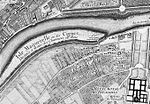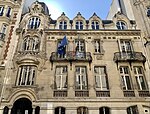Musée du Quai Branly – Jacques Chirac

The Musée du quai Branly – Jacques Chirac (French pronunciation: [myze dy ke bʁɑ̃li ʒak ʃiʁak]), located in Paris, France, is a museum designed by French architect Jean Nouvel to feature the indigenous art and cultures of Africa, Asia, Oceania, and the Americas. The museum collection comprises more than a million objects (ethnographic objects, photographs, documents, etc.), of which 3,500 are on display at any given time, in both permanent and temporary thematic exhibits. A selection of objects from the museum are also displayed in the Pavillon des Sessions of the Louvre. The Quai Branly Museum opened in 2006, and is the newest of the major museums in Paris and received 1.15 million visitors in 2016. It is jointly administered by the French Ministry of Culture and Communication and the Ministry of Higher Education and Research, and serves as both a museum and as a center for research. The Musée du quai Branly is located in the 7th arrondissement of Paris, on the left bank of the Seine, close to the Eiffel Tower and the Pont de l'Alma. The museum has been the subject of controversy, with some calling for the repatriation of its collections that were acquired through colonial conquest.
Excerpt from the Wikipedia article Musée du Quai Branly – Jacques Chirac (License: CC BY-SA 3.0, Authors, Images).Musée du Quai Branly – Jacques Chirac
Quai Jacques Chirac, Paris Quartier de Grenelle (Paris)
Geographical coordinates (GPS) Address Phone number Website External links Nearby Places Show on map
Geographical coordinates (GPS)
| Latitude | Longitude |
|---|---|
| N 48.860833333333 ° | E 2.2975 ° |
Address
Musée du quai Branly - Jacques Chirac (Musée des Arts Premiers)
Quai Jacques Chirac 37
75007 Paris, Quartier de Grenelle (Paris)
Ile-de-France, France
Open on Google Maps








